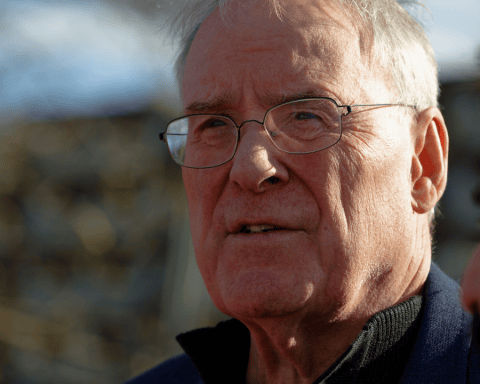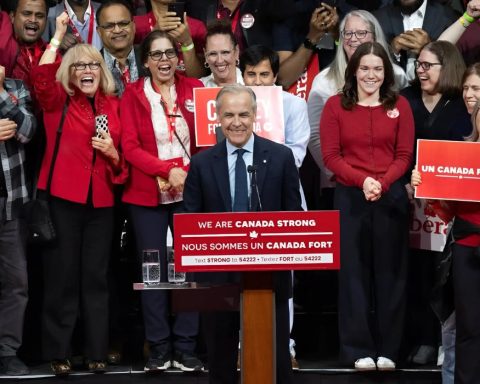Habitat for Humanity has taken its motto – “it takes a community to build a community” – to a whole new level recently. It joined forces with Stantec and Lafarge to lead an integrated team of local experts to build the first NetZero precast concrete home in Canada. The project will benefit two deserving families in Edmonton – and benefit the environment as well.
Unlike traditional buildings, a NetZero home is capable of producing as much energy as it consumes. The result is lower utility costs – much more affordable for hard-working families – and reduced impact on the environment.
The NetZero home project was initiated in late 2011 by Lafarge – the largest diversified supplier of construction materials in the U.S. and Canada. They had been providing strong support for Habitat for Humanity on both the international and local levels for over seven years. And they had work relationships with Stantec’s sustainable design leader, Klaas Rodenburg, and others on his team. So it was a natural fit to invite Habitat and Stantec to make the project a reality.
The strategy they agreed on was to test the concept in practice by actually doing a build – discovering and addressing challenges as they arose.
“From the start”, says Rodenburg, “we adopted a mindset of shared learning and action in order to break traditional barriers and to speed up the design and delivery of this NetZero duplex. We wanted to co-create a model that can be applied elsewhere.”
With such an open learning strategy, it was imperative to do the project through a non-profit builder.
“Habitat for Humanity was the perfect choice,” says Don Zakariasen, Marketing Director of Concrete Products at Lafarge Canada. “They have the building expertise. And they have a strong philosophy of providing a hand up to deserving families.”
A partnership for continuous learning
Habitat for Humanity’s Edmonton CEO, Alfred Nikolai, was quick to agree. He knows firsthand the importance of building sustainable and affordable homes that meet local community challenges.
“This was an opportunity to take our housing to the next level,” Nikolai explained, “addressing some of the environmental, economic and energy issues that we face in Edmonton.” During Edmonton’s cold winter months, heating and electricity costs are high.
He goes on to say that “as a charity, Habitat is an expert in mobilizing volunteers and community partners to bring our affordable home ownership model to hard working families.” The NetZero energy project has been enthusiastically embraced by Habitat’s partners in the community, the corporate sector, small business sector, by individuals and municipal and provincial governments.
As Nikolai says, “This project gives us the opportunity to share our collaborative building and stakeholder engagement expertise with a new and diverse group of partners – all focused on the same end game.”
The “shared learning and action,” that Rodenburg describes, informs every aspect of the NetZero project. Continuous learning – every day, on every task – helps move the group closer to their ultimate goal of improving the design and construction of buildings everywhere, and making them a healthier part of the environment.
That learning will continue even after the first NetZero duplex property is built. A research team from MIT in Boston will monitor the building with a number of inside and outside sensors and Habitat for Humanity will make utility bills available. Together, the data will be used to calibrate the modeling and compare it to other Habitat buildings with identical floor plans in similar environments. This data will be shared with the rest of the industry as we build our knowledge on moving towards NetZero buildings.
(Exploded axonometric demonstrating all of the individual components that come together to make the Habitat Net-Zero duplex. Courtesy of Stantec Architecture Ltd.)
Environmental balance
Habitat makes sure that their new homeowners are not burdened with a big monthly payment, by capping their mortgage payments at 25% of family income. The NetZero model advances this objective, by trying to reduce their energy bills to as close to zero as possible.
The homes incorporate a number of technologies to reduce the operating energy of the homes – including a high-performing precast concrete building envelope, thermal mass heat load leveling, solar photovoltaic cells, passive solar heating and geothermal heat pumps.
“Lafarge is very concerned about our impact on the environment,” says Don Zakariasen. “Our precast concrete group has implemented the Canadian Precast Concrete Institute (CPCI) sustainable plant program in our production facilities. The program lets us benchmark and measure the global warming potential and the embodied energy within our concrete products. Our goal is a documented, ongoing improvement in environmental performance.”
The NetZero project will highlight and demonstrate the overall benefits of the more sustainable concrete material – evaluating and documenting them in the MIT report.
Social and environmental value
The homes are connected to the power grid, but will be powered directly from solar sources whenever possible. They’ll only draw from the grid when necessary, at peak usage times expected mostly during the winter.
Power will also be sold back to the power grid when the homes are able to generate a surplus. This will help the duplex owner’s manage their energy costs.
“If our calculations are correct”, says Stantec’s Rodenburg, “the power we draw from the grid, and the power we put back, will balance to zero.” But there is always the human factor.
“We know the performance of the solar panels – we have a solar array on Stantec’s South Tower that we’ve been monitoring for two years. The thing we cannot model is the people living in the homes and their behaviour in using energy. According to [Edmonton’s electricity provider] EPCOR, a family of four will use about 4.5 kW of power, and that’s what these solar panels are sized for.”
Other technologies are designed to use that energy more efficiently. The high-performance building envelope will provide air tightness as well as insulation. Thermal mass is also another very important consideration. Concrete has been criticized for the release of greenhouse gases during the traditional cement production process – though researchers are hard at work to develop more sustainable production techniques.
On the upside, though, concrete also delivers some positive environmental benefits, as a very effective “heat battery” – absorbing heat and slowly releasing it over time to smooth out and reduce overall energy usage.
It is a principle of Habitat for Humanity that the families who will own the homes contribute 500 hours of hands-on support during the construction phase. This provides them with first-hand learning about what goes into their homes, including the energy-saving systems. Upon completion in July, the families will take part in a ceremony with fellow collaborators, at a public ribbon-cutting celebration – after which they will move into their new homes.
“It’s always a spine-tingling moment to see people being given a key to their own homes,” says Keith Shillington, Stantec’s VP for Alberta – Edmonton Capital Region. “It is so gratifying. They’re so excited to have broken out of the cycle of only dreaming of owning a home – to actually become the owner of a house, one they also helped to build!”
Everyone benefits from this powerful collaboration
What makes this possible is the willingness of all partners to co-create solutions that address the very real environmental, economic and social issues we all face, now and in the future. It is a remarkable collaboration by a range of individuals and organizations:
Lafarge birthed the original idea for the NetZero building, and are providing and installing the precast concrete building materials.
Habitat is leading the build.
The City of Edmonton donated the land zoned for duplexes through the Cornerstones Grant Program.
Stantec Architecture designed the NetZero building.
The Alberta Chapter of the CaGBC sponsored the LEED for Homes certification and convinced a number of local sustainable design firms to collaborate in the project, including Kassian Dyck Associates, Clark Ecoscience and Sustainability, Eco Ammo and Eco Synergy.
The families contributed their “sweat equity” to the project, and will provide data on “the human factor” and how the house performs in real life.
And many others donated their time and expertise during the development and building of Canada’s first Precast NetZero duplex home in Edmonton.
Looking ahead
The core NetZero team of collaborators is confident that the lessons learned from this challenging project will make precast concrete a sustainable option for homes and multiple housing projects in the future, in Canada and abroad. They also envision the families living with great pride in these groundbreaking homes that they helped to build. This is our future. Collaboration works.
(Workers communicate with crane operator during the erection of precast insulated panels. Courtesy of Habitat for Humanity Edmonton)
Key insights that we can all learn from
Whether the end goal is to build a sustainable home, develop a clean energy solution, or to create a social enterprise that unlocks the innate talents of elders or youth, we can all benefit from the key learning of this NetZero initiative – as collaborative agents of positive change:
The vision has to be clearly articulated as an actionable deliverable – one that emotionally and pragmatically inspires others to come on board as equal collaborators. Lafarge did this in spades by teaming up with Habitat for Humanity, a proven leader in providing homes for deserving families.
The core group needs to agree on a strategy of learning and transparency to enable the collaborators to design, study, refine and build product as a means for creating sustainable value that positively impacts business and society, and can be adapted by others.
Collaborating differently – with traditional collaborators but in unique ways, or with non-traditional partners – is a powerful means for accelerating the discovery and development of value creating opportunities that benefit everyone.
To view the complete collaboration series, click here.





